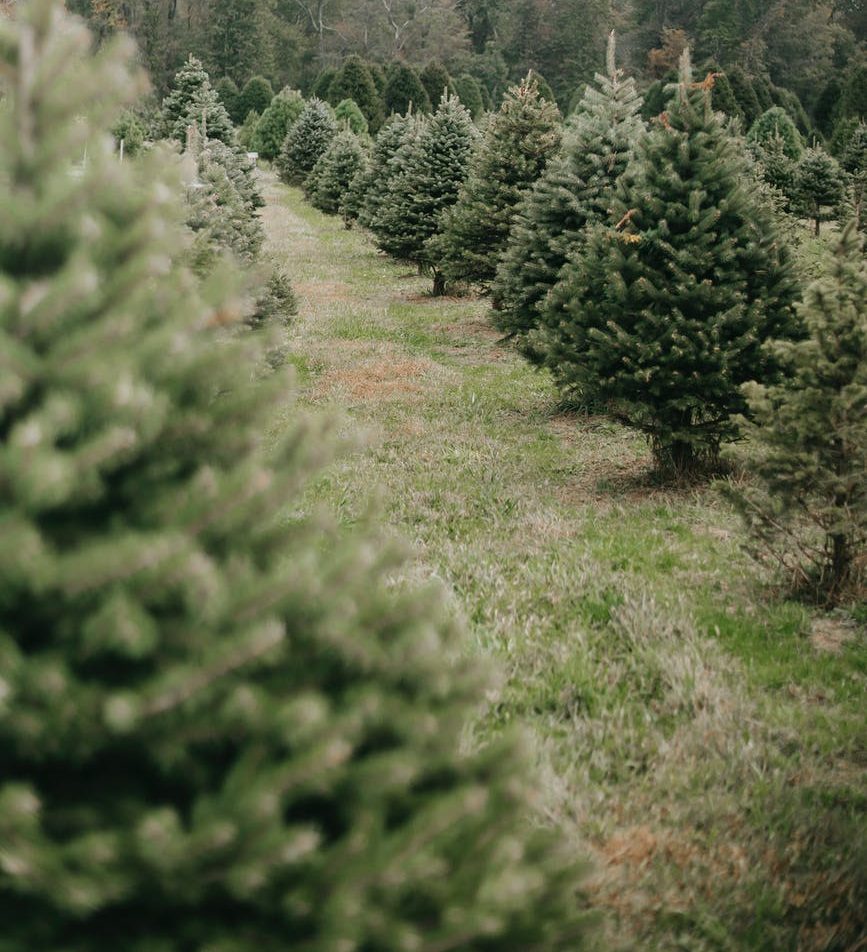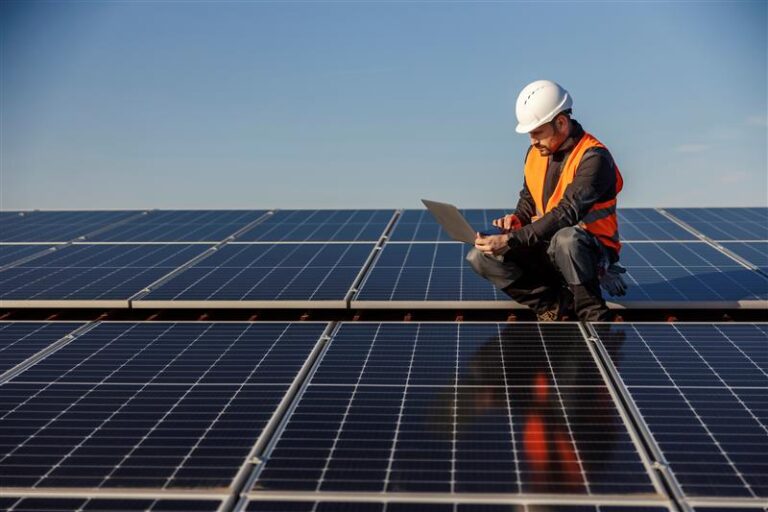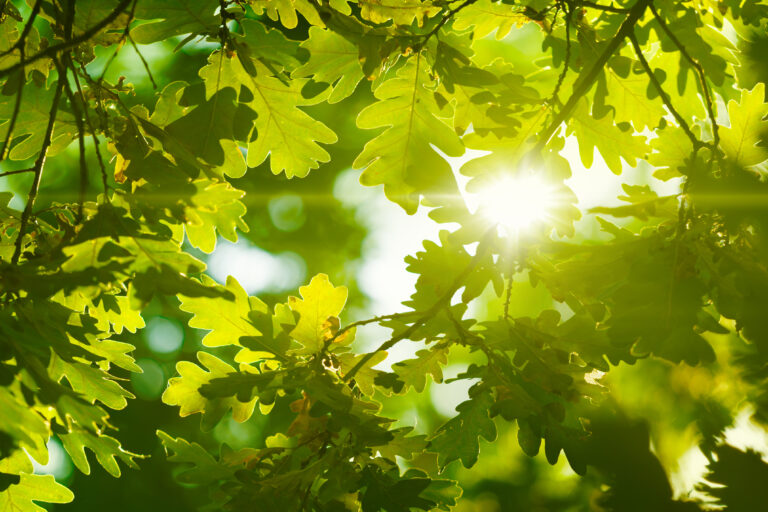It’s the most wonderful time of the year… Whether you’re spending time with family, going away or just having a well-deserved break from work, Christmas is possibly the most popular holiday. However, the consumer demand surrounding the Christmas season brings a significant environmental impact. In this article, we consider how you can limit the environmental cost of your Christmas, with a more considered approach.
1. Rethink your Christmas tree
The real tree versus artificial tree debate continues to keep us divided. However, with the focus on sustainability now greater than ever, it’s time to re-think our treasured traditions.
- Artificial trees: A single artificial tree has a carbon footprint of around 40kg of CO₂ according to the Carbon Trust. It would need to be reused for at least 10 years to offset its environmental impact, so if you do opt for one, invest in a high-quality tree to ensure longevity.
- Real trees: These have a smaller footprint (10-16kg CO₂) if disposed of sustainably. Also, many communities now offer Christmas tree recycling points where your tree can be repurposed as wood chippings or mulch.
Alternative tip: Consider renting a tree. Rental tree farms allow you to return your tree to be replanted, so they can continue removing CO₂ and supporting local wildlife year-round.
2. Minimise wrapping waste
A survey last year predicted that we would dispose of wrapping paper amounting to 108 million rolls over the Christmas period. While many of us would recycle wrapping paper , there are additional ways we can ensure we are supporting a more sustainable consumer cycle.
- Choose wrapping paper that passes the ‘scrunch test’ and isn’t coated in glitter or foil
- Opt for recycled wrapping paper or reuse paper bags as gift wrap.
- Replace plastic tape with paper or washi tape, or omit the tape and use string.
- Create your own gift tags from leftover materials like used greeting cards or plain luggage tags.
- Try seeded paper, which can offer a gift within a gift, allowing the recipient to plant it to enjoy flowers.
3. Lower your energy usage
During the festive season, energy usage increases by 11% in the average UK household, due to the extra lighting and electrical usage, lengthier TV viewing and greater reliance on gadgets. But what if this year, you decreased your energy usage instead. Try these simple energy-saving tips:
- Switch to LED Christmas lights, which use 90% less energy than traditional bulbs.
- Use timers for lights to avoid waste and manage energy consumption efficiently.
- Unplug devices like TVs or gaming consoles when not in use – standby mode still consumes energy.
Energy-free fun: Play board games instead of relying on electronics, or take a walk together and enjoy meaningful, screen-free time together.
4. Shop considerately
Refrain from purchasing an excessive amount of food. In previous years we have thrown away around 7 million tons of food after Christmas. Be mindful of how much your household will consume over the holidays and consider where you can shop to boost the local economy.
This choice of responsible shopping can also be reflected when buying gifts. Rather than relying on large global brands, such as Amazon, which contributed 60.64 million metric tons of CO₂ in 2022 alone, look to local shops and businesses, or small independent retailers and craftspeople. Alternatively, buying experience-based gifts can reduce consumption and create unforgettable moments with friends and family.
- Opt to support local businesses and independent retailers over global brands
- Review the sustainability credentials of retailers before you purchase
- Choose experience-based gifts, such as tickets or memberships, to reduce material consumption.
- Avoid novelty gifts often associated with Secret Santa exchanges.
Food tips: Plan portions carefully and freeze leftovers to avoid the million tons of food that are wasted after Christmas, contributing to deforestation and emissions.
5. Try a plant-based Christmas dinner
An even bigger step towards a more sustainable Christmas, is going meatless! Out of the whole Christmas spread, a turkey uses the largest amount of energy to cook and has a carbon footprint of 10kg before It even reaches our homes. Reconsidering food which you can switch out for meat-free alternatives over Christmas will help make a difference to your carbon footprint. The growth in meat-free options over recent years means it is easier than ever to make some switches. Consider:
- Swapping your turkey for a nut roast or plant-based alternative.
- Reduce your meat consumption over the Christmas holiday, such as omitting the Boxing Day ham.
Small changes can significantly reduce your environmental impact while offering delicious alternatives.
6. Plan ahead and donate leftovers
Food production is one of the largest causes of deforestation, and food waste not only amplifies this issue but also contributes to methane emissions as it decomposes in landfills.. To reduce your contribution to this problem, try to plan ahead as much as you can with these tips:
- Batch cook meals and reheat leftovers to avoid waste.
- Use energy-efficient appliances, like microwaves or air fryers for cooking parts of your Christmas dinner.
- Donate excess food to local shelters or food banks to support families in need
7. Use an ethical search engine
Looking for simple ways to support charities or organisations working to combat the climate crisis? Start with something as effortless as switching your online search engine to something like Ecosia. Just like Google or Safari, Ecosia lets you shop and browse as usual, but with one big difference: their profits go toward planting trees, meaning you’ll contribute to reforesting the planet while ticking off your Christmas list.
8. Get creative with making your own
Each year, the pressure to purchase decorations, gifts and indulge in chocolate can get the best of us. Why not take a more sustainable approach this year by getting creative.
Plastic-heavy decorations contribute to significant waste.
- Repurpose materials like wrapping paper and pinecones, or try drying orange slices.
- Craft personalised ornaments that reflect your style while reducing consumption.
Chocolate production is a major driver of deforestation.
- Try making festive treats at home to reduce reliance on unsustainable supply chains.
- Edible gift tags made from gingerbread add a fun and personal touch to your presents. Add strawberry laces to attach to your gifts and you’ll create a unique and delicious treat!
Gift-giving doesn’t have to stop, just rethink it! Why not encourage homemade gifts amongst your loved ones.
- Homemade gifts like baked goods, art or DIY kits offer a personal touch while reducing reliance on mass-produced items.
10. Dress your table sustainably
Christmas is a time to enjoy hosting a festive dinner with a beautifully set table, for your guests to enjoy. However, figures suggest that 30% of waste is generated over the Christmas period.
Traditional Christmas crackers have a huge environmental impact, primarily due to the single-use plastics and novelty fillers which will often end up in landfill. It’s estimated that over 100 million crackers are binned after Christmas every year. Some retailers, like John Lewis, have taken steps to reduce waste, such as ceasing the sale of crackers that contain plastic toys. Here are some other alternatives you can consider:
- Create homemade crackers with personalised gifts or reusable elements.
- Use biodegradable or recyclable decorations for your table settings.
12. Choose natural candles
Candles are a big part of the festive period, whether they are for lighting over December, for gifts or even just to enjoy a festive scent. You can help have a more sustainable Christmas by investing in natural scented candles made from natural wax rather than paraffin-based candles. Paraffin candles are derived from petroleum which is one of the biggest contributors of carbon dioxide. These types of candles contain carcinogen compounds which are toxic air pollutants that can also contribute to bad air quality when consumed.
In contrast, natural wax candles, such as soy wax or beeswax, will reduce the impact on the planet during production, as well as when burning.
Wishing you a merry and sustainable Christmas!
As we approach the holiday season, let’s remember that even small steps can make a big difference in reducing our environmental impact. Whether it’s rethinking your tree, planning meals thoughtfully, or choosing eco-friendly gifts and decorations, every action counts.
Wishing a Merry Christmas to our team, customers, suppliers and everyone who is thinking about how to power a more sustainable future!













